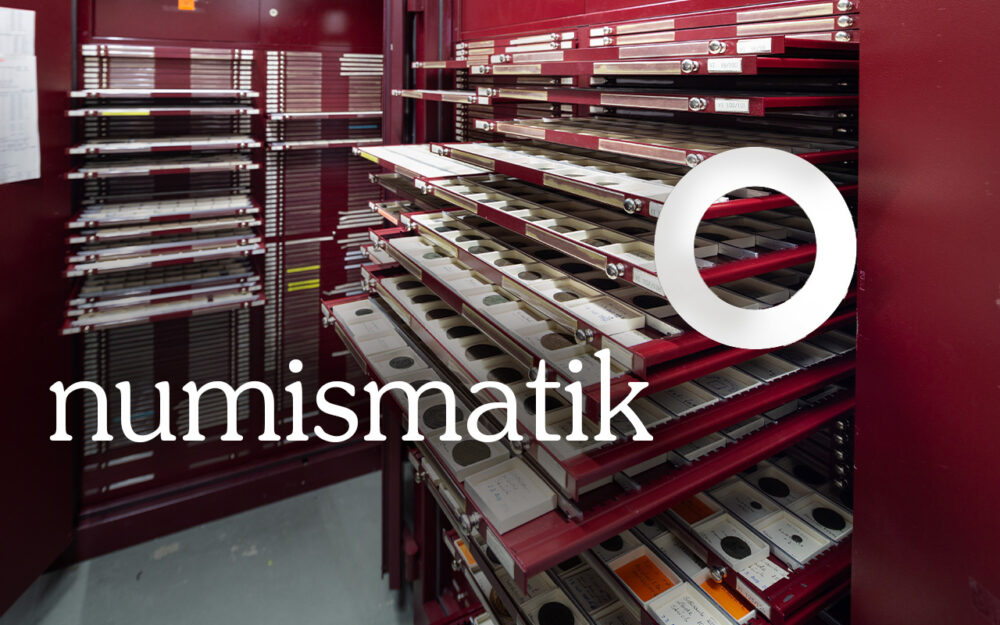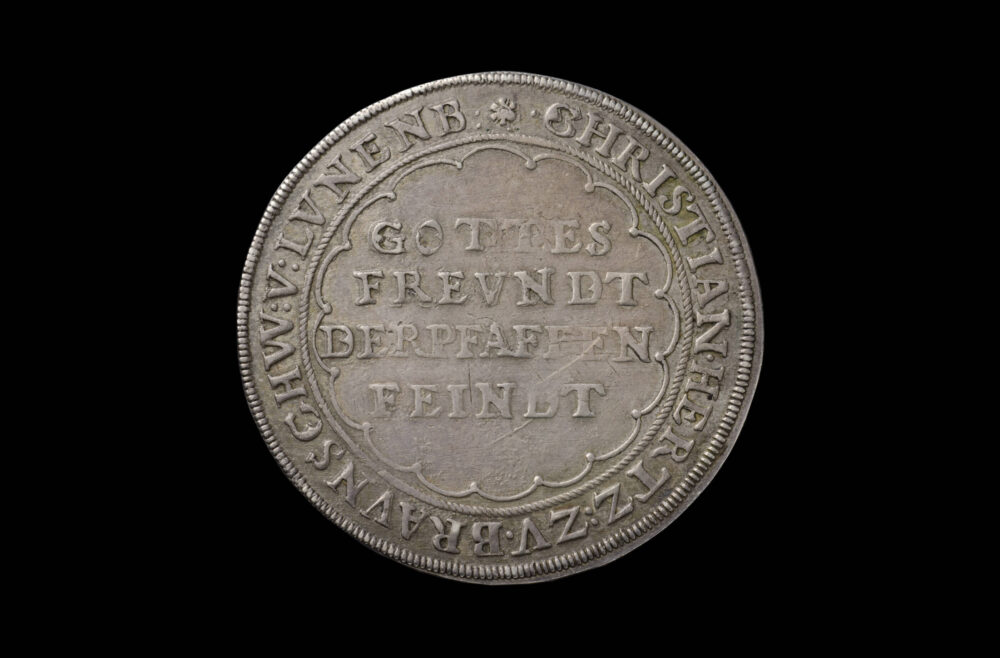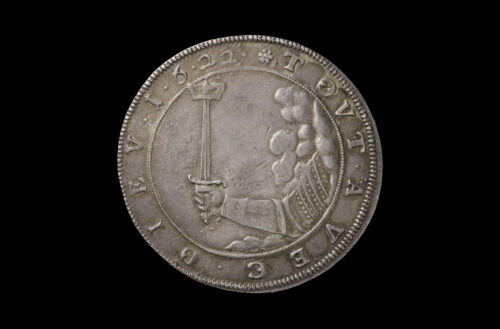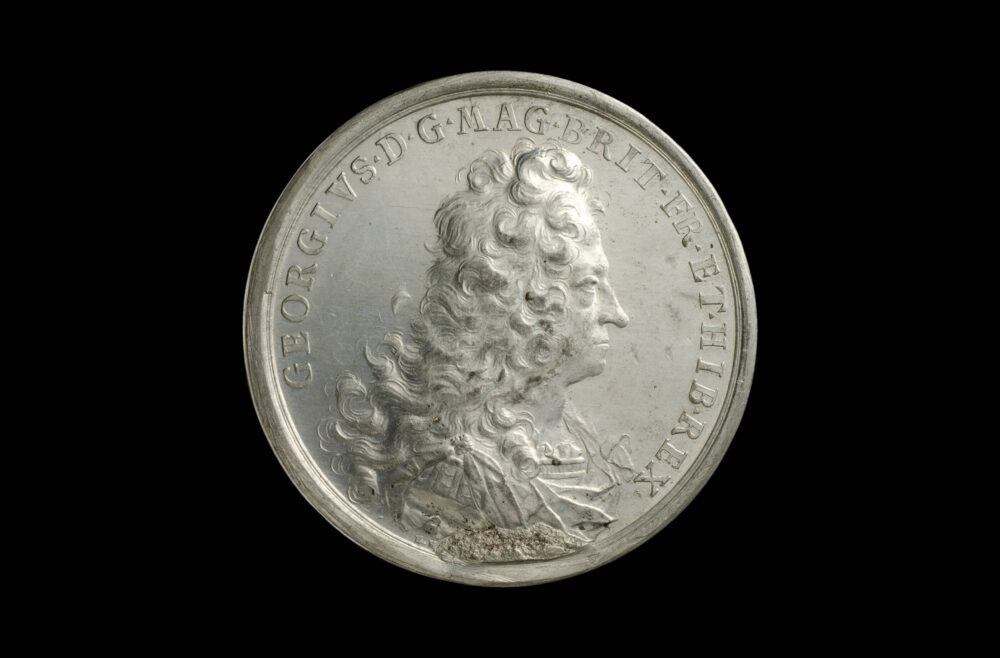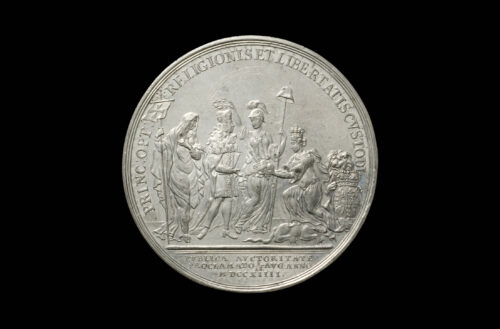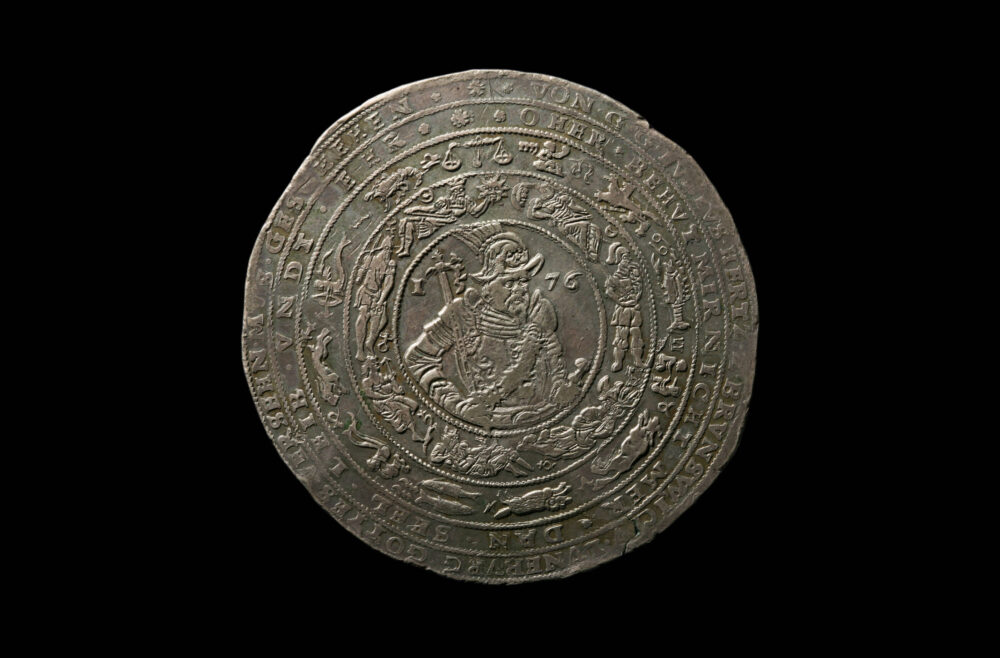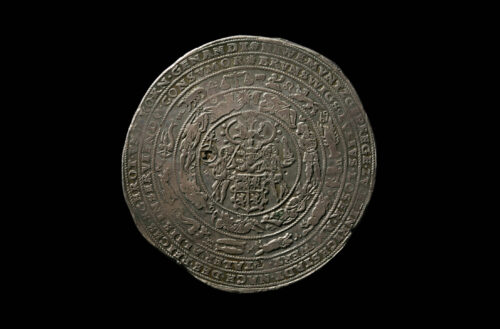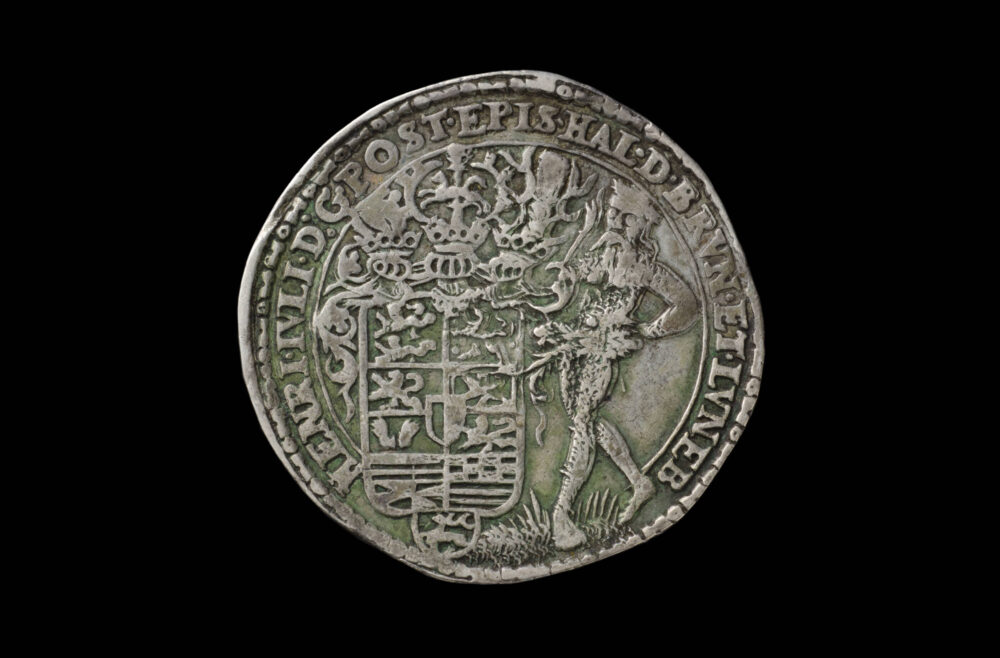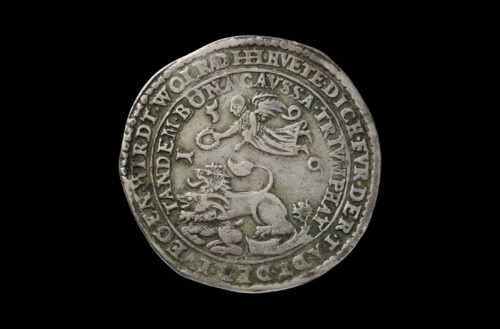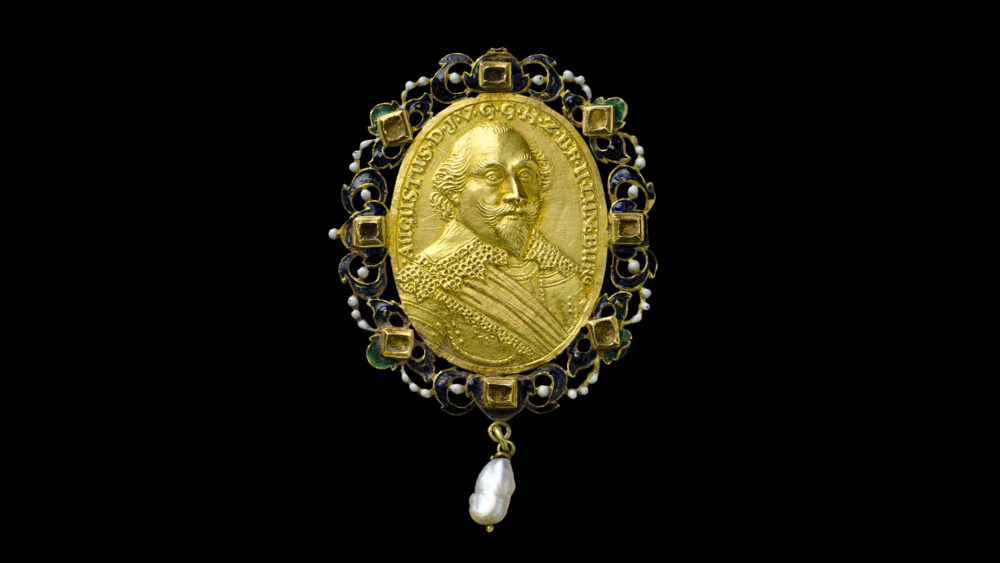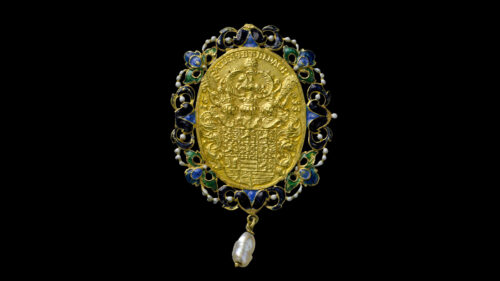A short history of the collection
The collection history of the Coin Cabinet, which was opened at the Royal Library in Hanover, spans almost 300 years and was the responsibility of the library directors for almost a century. King George III founded it and generously supported it in order to collect coins and medals from the Guelph sovereigns. Due to the Seven Years' War, the development of the cabinet (1756-1763) under George III stagnated. This did not prevent the supervisor L. Albrecht Gebhardi (1799-1802) from incorporating English coins into the collection concept for the first time. The phase of stagnation continued until 1821, as the coin cabinet had to be stored in the vault of the English bank due to the political situation in London between 1803 and 1816. The collection grew under the supervision of BG Heinrich Pertz. Among other things, he was responsible for the specimen copy right, through which stamps from current productions in Hanover and Clausthal came into the collection. When the renowned numismatist Hermann Grote took office in 1842, the coin cabinet was separated from the library and elevated to an independent institute. During his term of office, the 100th anniversary of the Coin Cabinet was celebrated. When he was fired, the inventory had increased from 4.759 properties to 12.000. Under King George V, the coin cabinet was integrated into the Guelph Museum and could be admired by visitors for the first time from 1862. The successful acquisition policy of the then supervisor C. Ludwig Grotefend (1853-1866) meant that the coin cabinet at that time already included 20.800 objects, almost half of the current holdings.
With the occupation of the Kingdom of Hanover by Prussia in 1866, King George V was also deposed, whereupon he took the coin cabinet with him into exile in Austria in 1867. It experienced its next heyday there under Eduard Fiala (1898-1921): he acquired 13.000 new coins and published a nine-volume catalogue. Under Fiala, the cabinet took on a universal character as he purchased, among other things, Viking coins and Scandinavian found coins. But as a result of the financial crisis caused by the Second World War, the supervisor C. Heinrich Buck sold duplicates and parts of the collection in 1926 that did not fit the ducal collection concept. Despite the circumstances, by the end of his term in office in 1939 he contributed to the collection growing to 37.000 coins and medals. When the Guelph family moved back to Germany, the coin cabinet was housed at Blankenburg Castle from 1934 and at Marienburg near Nordstemmen in 1945. In 1983, Deutsche Bank acquired the collection and set up the Lower Saxony Coin Cabinet, whose supervisor was Dr. Rainer Cunz continued to look after it in the Hanover State Museum even after it was reacquired by the state in 2009. Today it is still the world's largest and most important collection of Lower Saxony coins and medals.
Collection focus
Over almost 300 years, coins and medals have been collected that refer to the family history of the various Guelph lines and to the territory of the former Guelph country. The core areas of the collection are, firstly, today's federal state of Lower Saxony as the center of Guelph rule and secondly, England due to the personal union between the Electorate and Kingdom of Hanover and the Kingdom of Great Britain. The collection in Germany extends from 10th/11th. Century with Ottonian coinage to the 20th century with the so-called imperial coins. The coins from the British context date from the personal union in 1714 to the death of Queen Victoria in 1901. The personal union ended with her accession to the throne in 1837.
Denarii, hollow pennies and bracteates from the Middle Ages
Chronologically, the collection of the Hanover State Museum begins with an important holding of denarii, comprising around 4.500 coins, from the 10th and 11th centuries, the Ottonian-Salian period. These include Otto-Adelheid Pfennige and Sachsenpfennigs. The bracteates also include urban bracteates and found coin bracteates. They begin in the High Middle Ages with Henry the Lion and extend to the late medieval hollow pennies of German emperors and kings. These also include the so-called lion bracteates. A significant proportion of the bracteates come from the Molanus/Böhmer collection.
Coinage of the various Guelph lines
The focus of the Coin Cabinet's collection is the coins of the kings, dukes and princes of the various Guelph lines. The bracteates of the Old House of Braunschweig and Lüneburg are followed by the coinage of the Wolfenbüttel line of the Middle House of Lüneburg and Braunschweig from the 16th century onwards. They now show different denominations (different thaler denominations, Julius thaler, rebel thaler, lie thaler, Eintracht thaler, etc.). From the New House of Braunschweig of the Wolfenbüttel line, in addition to various ducats, thalers and dimes (Löser, Glockentaler, Wildemanntaler, Ausbeutetaler, Mariegroschen, etc.), there are also numerous mercy pennies, medals and death coins of the dukes. In total, the collection includes around two hundred solvers. The mintings of the Lüneburg/Hannover line of the New House of Lüneburg are equally extensive with different coin denominations (Good Pfennige, Löser, etc.) as well as death coins and medals. From the British kings (George I to William IV) of this line, coins and medals from the old and new homeland with the corresponding local currencies are representatively represented in the collection. In addition to these main lines, there are also coins and medals from the Este - the Italian Guelph line (13th-18th centuries) as well as Russian coinage due to the family connection to Russia through Anton Ulrich the Elder. Younger (1714-1770).
Areas ruled by Guelphs
Another focus of the coin cabinet in the context of the Guelphs are the coins from northern German counties such as East Frisia, dioceses such as Osnabrück, monasteries such as Königslutter and abbeys such as Northeim, which were incorporated into the Kingdom of Hanover or were subordinate to it. Depending on the location, the minting period varies from the 12th to the 18th century.
Harz character
The Harz was of immense importance for metal extraction and coinage in northern Germany. The collection contains silver bars from the 14th century, the metal of which comes from the Ore Mountains. This is a special type of money in Lower Saxony used for wholesale and long-distance trade. There are also around 550 rake pfennigs from various Harz mints (17th - 18th centuries), several hundred coins from Stolberg as well as numerous Wildemanntaler, Harzer Ausbeutetaler and 17th century Austaschenöser from the various lines of the Dukes of Braunschweig-Lüneburg and medals from Harzer Mints with corresponding images from the Harz Mountains are available.
Lower Saxony city coinage from the 12th to 18th centuries and medals
The collection also includes municipal coins from Einbeck, Emden, Goslar, Göttingen, Hameln, Hanover, Hildesheim, Lüneburg, Northeim, Osnabrück and Stade. The municipal coins show a wide range of variations. The denominations range from bracteates and hollow pennies of the late Middle Ages - the Mariengroschen, groschen, Pfennigen, Kippergroschen to thalers and ducats in various denominations from the 12th to the 18th century. There are also medals from these and other cities in Lower Saxony in the collection.
Coins from the British Colonies
The Coin Cabinet has an extensive collection of coins from the colonial context of the British Empire in the 18th and 19th centuries, specifically extending from the reign of George I to Victoria. Northern Europe is represented by coins from the Crown possessions of Guernsey, Jersey and the Isle of Man. Colonial coinage comes from Southern Europe, Asia (Southeast Asia and India), West, East and South Africa, North America, Canada, Australia and the Caribbean Sea. The focus is on Indian and Australian coins, while Malta also collected the coins of the Order of St. John from the 16th century.
Tokens
Of the approximately 1.600 tokens in the collection, the majority come from the cities of Great Britain; only around 480 tokens are from the cities of Ireland, Scotland and the colonies.
Other sections of the collection
The collection contains a variety of personnel medals and commemorative coins. Thanks to the donation from Gerd-Henrich Stork in 2014, the Coin Cabinet has a unique and extensive collection of coins, medals and plaques that depict geoscientific events, phenomena as well as people and objects. The collection also includes a small number of non-European means of payment, including manillas and shell money. There are also galvanoplastic replicas of our own holdings. The main copies that were copied were hollow coins and St. Mary's pennies.

